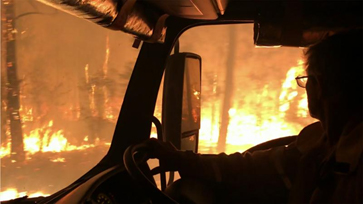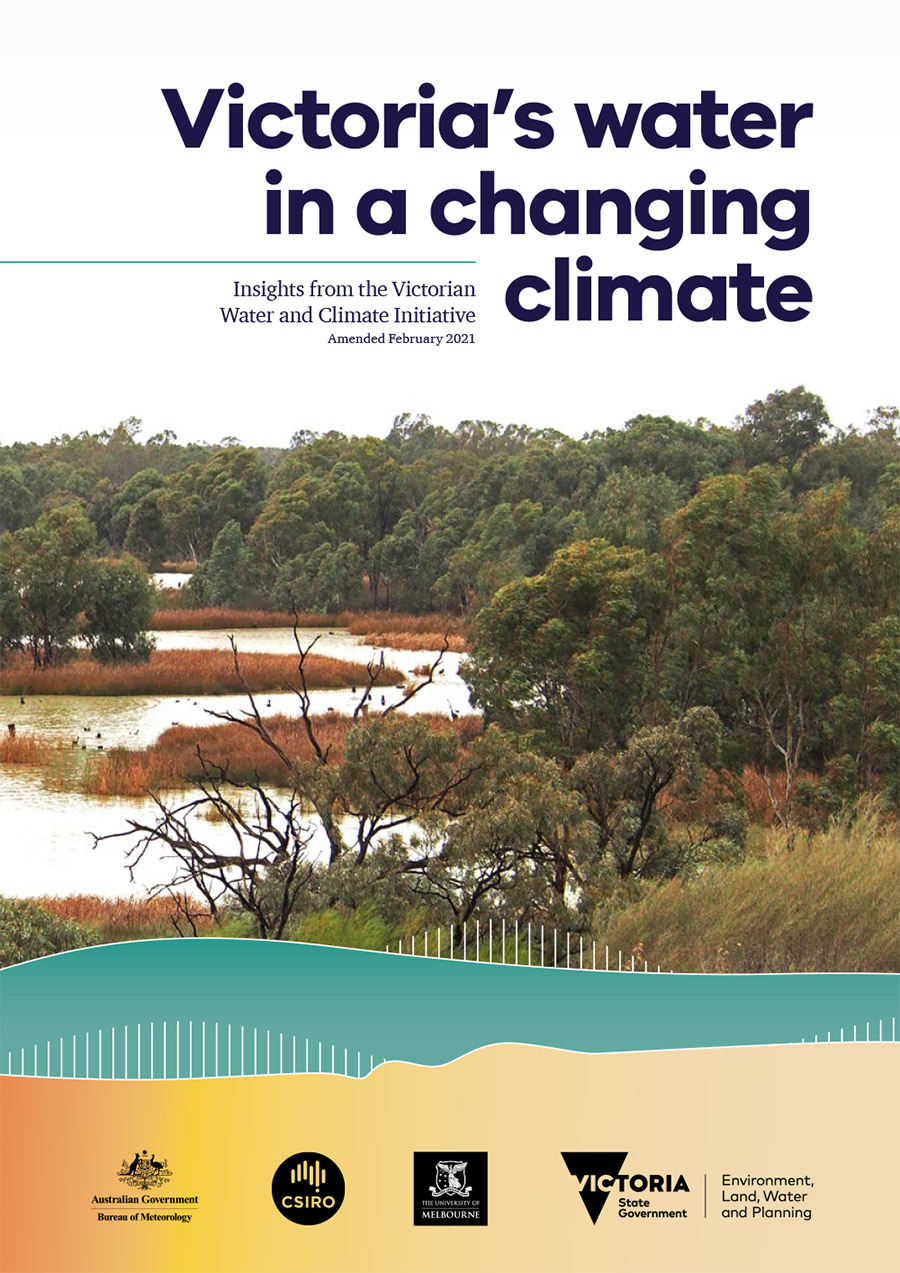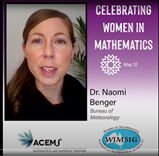
Bureau of Meteorology (BOM)
The Bureau of Meteorology is Australia's national weather, climate and water agency. Its expertise and services assist Australians in dealing with the harsh realities of their natural environment, including drought, floods, fires, storms, tsunami and tropical cyclones.
The Bureau of Meteorology has been a valued ACEMS IAM since 2017, and its collaboration with ACEMS has included exploration of quantitative, data, and methodological challenges with weather science, including extreme value analysis, data homogenisation.

Overview of 2020
- Collaborative research, including for identifying climate regions in SEA based on weather types
- Research and knowledge exchange to inform BOM’s presentations to State Inquiries and a Royal Commission in response to Australia’s 2019-2020 bushfires
- Application for Harry Otten Prize for Innovation in Meteorology, to support proposed new research in collaboration with meteorologists from BOM
- Women in Maths Day 2020 joint-celebrations featuring BOM mathematical scientists
- ACEMS 2020 Virtual Annual Retreat attendance and industry keynote
Some of these highlights are shared in further detail below.
Key Research Projects and Knowledge Exchange in 2020
Climate Change and Bushfire Risk
In response to the 2019/2020 Australian bushfires, BOM was asked to present to four State inquiries and the Royal Commission into National Natural Disaster Arrangements (also referred to as the Bushfire Royal Commission). BOM cited research by ACEMS AI Kate Saunders, an extreme value statistician, and her collaborators, when quantifying increased risks attributable to anthropogenic climate change, as detailed below.


Source: https://naturaldisaster.royalcommission.gov.au/
BOM presented numerous times to the State inquiries and Bushfire Royal Commission, BOM presented including critical research on the "Attribution of the Australian bushfire risk to anthropogenic climate change", by an external research team including Kate Saunders, the only statistician and extreme value theorist, with support from BOM (as per the publication’s acknowledgements).
That critical research, and its fast publication, enabled BOM to present supporting science to the inquiries and Commission with specific values estimating the increased bushfire risk attributable to anthropogenic climate change.
According to a BOM researcher who had engaged in knowledge exchange with Dr Saunders’ team, this “helped enable a more comprehensive acknowledgement of why those extreme conditions occurred, which is beneficial for the recommendations and subsequent outcomes from these inquiries”.
The CSIRO subsequently cited this research in their "Climate and Disaster: Technical Reports (2020). CSIRO, Australia", a report commissioned by the Prime Minister, in response to the 2019/2020 bushfires, to recommend ways in which Australia can increase its climate and disaster resilience.
Identifying and describing climate regions
“Redefining southern Australia’s climatic regions and seasons”
Kate Saunders worked with BOM researchers on a project “Redefining southern Australia’s climatic regions and seasons”, to identify climate regions in South East Australia, based on weather types. This research has had a practical impact, including as demonstrated by its use by Victorian Water and Climate Initiative (VicWACI), as further detailed below.
Research by ACEMS Kate Saunders in collaboration with CSIRO colleagues has re-defined southern Australia’s climatic regions and seasons. This research is of practical benefit to BOM and for climate science research more generally.
Climate scientists routinely rely on averaging over time or space to simplify complex information and to concisely communicate findings. Currently, no consistent definitions of ‘warm’ or ‘cool’ seasons for southern Australia exist, making comparisons across studies difficult. Similarly, numerous climate studies in Australia use either arbitrarily defined areas or the Natural Resource Management (NRM) clusters to perform spatial averaging. While the NRM regions were informed by temperature and rainfall information, they remain somewhat arbitrary. They used weather type influence on rainfall and clustering methods to quantitatively define climatic regions and seasons over southern Australia.
The researchers suggest that the use of these regions would provide consistent climate analysis across studies if widely adopted. Read more here.

- VicWacCI published findings: are intended to help better inform our understanding of past and future climate change and the impacts on water resources – to enable better management and preparation for the future; and reveal how water resources are “under pressure from increasing demand and decreasing supply” - allowing better preparation for the future – marked by “large variability along with increasingly hotter and drier conditions”.
- VicWACI is a partnership between the Bureau of Meteorology (BOM), the Victorian Department of Environment, Land and Water (DELWP), CSIRO, and the University of Melbourne.
Application for the Harry Otten Prize for Innovation in Meteorology
ACEMS AI Kate Saunders, with Dr Kirien Whan, is applying for the Harry Otten Prize for Innovation in Meteorology for “Second Wind: Extending the official wind gust records with citizen science observations”.
If awarded the prize, Kate and Kirien will conduct research in collaboration with colleagues from BOM to harness wind data from personal weather stations (PWS), for the development of open-source software to produce a high-quality data set of wind gust observations from PWS. This data will be of practical use to meteorologists (including from BOM) to improve weather forecasts. Particularly if it can be used to predict and provide warnings for extreme wind gusts that are costly for society, causing power outages, train disruptions and infrastructure damage
Engagement Highlights
Women in Maths Day 2020 Campaign
ACEMS led a national video campaign to celebrate International Women in Mathematics Day which included videos from four inspirational female BOM researchers, each highlighting the value of mathematics - in doing BOM’s vital work, helping the community, in their jobs, and for their careers.

Watch Dr Naomi Benger’s speaking about how maths has enabled her work in climatology and can provide a diversity of other great career opportunities

Watch former BOM Chief Scientist Dr Sue Barrell speaking about how the evolution of maths and computing has positively transformed and enabled BOM’s work throughout her career

Watch Dr Mika Peace’s video - sharing how maths underpins her work, understanding bushfire risk and spread, which is vital in helping our fire agencies and communities

Watch Dr Hongyan Zhu’s video - talking about how super computers and maths help us make improved forecasts, predictions, and better decisions for our planet
ACEMS 2020 Virtual Annual Retreat
BOM attended ACEMS 2020 Virtual Annual Retreat, on the industry partners day, with Dr Simon Grainger delivering an industry presentation on the topic “Estimating the uncertainty of the Australian annual temperature trend” and discussed applying a number of methods to the observations to produce more accurate estimates of temperature trends.
Estimates of temperature trends and the warming of the Australian climate over time are critical to Australia’s State of the Climate Report, co-authored by the BOM and CSIRO, and were included in BOM’s submission to the Bushfire Royal Commission, following the 2019-2020 bushfires. The State of the Climate 2020 Report, published shortly after the retreat, would upgrade the number to two decimal places and introduce uncertainty levels: “Australia’s climate has warmed on average by 1.44 ± 0.24 °C since national records began in 1910, leading to an increase in the frequency of extreme heat events.”

Future Opportunities in 2021
We expect significant opportunities for engagement and collaboration in 2021, including:
- An academic-industry workshop on extreme value statistics, for extreme weather, bringing together experts from ACEMS, BOM, CSIRO and others
- ARDC Bushfire Challenge opportunities, following the co-design workshop ACEMS researchers and stakeholder engagement coordinator participated in in 2020
- Engagement with the Integrity Systems Company hackathon in planning, including possible provision of relevant data and/or expertise
- Engagement and possible project related to “Second Wind: Extending the official wind gust records with citizen science observations”